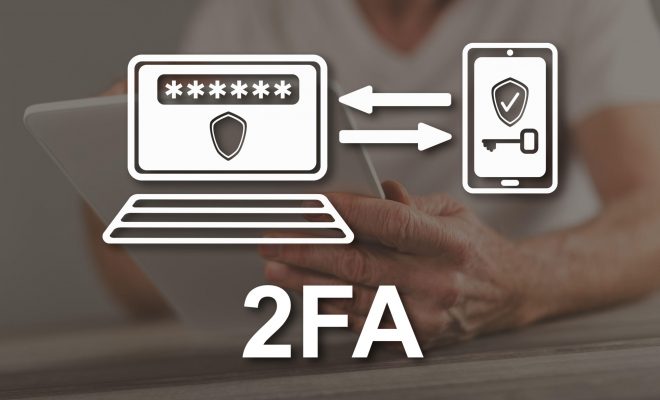Safeguarding IoT Gadgets via Dual-Factor Verification: Obstacles and Resolutions

The Internet of Things (IoT) has utterly metamorphosed how we synergize with contraptions, rendering our existences more interconnected and expedient than at any other juncture. Nevertheless, accompanying this augmented connectivity materializes a heightened jeopardy of cyber menaces. Among the most potent methodologies to fortify IoT apparatuses transpires through the effectuation of two-factor authentication (2FA). Within this exposition, we shall scrutinize the impediments and remedies concomitant with buttressing IoT mechanisms employing 2FA.
Grasping Two-Factor Authentication (2FA)
Two-factor authentication manifests as a security procedure mandating users to proffer two discrete modalities of identification to procure entry to a contraption or framework. This supplementary stratum of security facilitates the preclusion of unauthorized ingress, even supposing a malefactor has garnered a user’s passphrase. Multifarious varieties of 2FA subsist, encompassing:
- SMS-predicated 2FA: Users collect a one-time password (OTP) by means of text message, which they must input to attain admission.
- Voice call-oriented 2FA: Analogous to SMS-founded 2FA, yet the OTP token gets transmitted via a voice call.
- Mobile app-centered 2FA: Users establish a devoted app on their smartphone, which generates OTPs or push notifications for corroboration.
- Hardware token-grounded 2FA: Users tote a corporeal contrivance that spawns OTPs, which they must key in to penetrate the system.
Impediments in Instituting 2FA for IoT Mechanisms
While 2FA epitomizes a formidable security gauge, effectuating it in IoT contraptions poses idiosyncratic hurdles. A few of these encumbrances comprise:
- Constrained processing might and memory: Copious IoT gadgets harbor confined resources, rendering it arduous to actualize intricate security measures akin to 2FA.
- Battery life limitations: Instituting 2FA can sap the battery life of IoT apparatuses, which frequently depend on long-lasting, low-power operations.
- Absence of standardization: IoT mechanisms manifest in multitudinous shapes and dimensions, with disparate operating systems and hardware configurations, making it challenging to devise a universal 2FA solution.
- User fallacy: Implementing 2FA in IoT contraptions may necessitate users to execute additional steps, which can prompt user error and vexation.
Juxtaposition of 2FA Techniques for IoT Gadgets
To more adeptly apprehend the assets and shortcomings of different 2FA methodologies for IoT mechanisms, let’s contrast them in a chart:
| 2FA Approach | Protection | Effortlessness of Utilization | Expenditure | Compatibility |
|---|---|---|---|---|
| SMS | Moderate | Facile | Low | High |
| Voice Call | Moderate | Facile | Low | High |
| Mobile App | High | Moderate | Low | Moderate |
| Hardware Token | High | Arduous | High | Low |
As we can discern, each 2FA technique possesses its merits and demerits. SMS and voice call-based 2FA prove facile to utilize and compatible with most contraptions yet offer moderate security. Mobile app-based 2FA affords high security and remains relatively easy to employ, but may not harmonize with all IoT mechanisms. Hardware tokens extend the loftiest echelon of security yet prove more difficult to wield and may not be compatible with many IoT gadgets.
Resolutions for Buttressing IoT Apparatuses with 2FA
Despite the impediments, multifarious solutions subsist for effectuating 2FA in IoT contraptions:
- Cloud-based 2FA: By leveraging cloud services, IoT mechanisms can offload the processing and storage exigencies of 2FA to remote servers, mitigating the encumbrance on the contrivance itself.
- Integration with extant authentication systems: Many IoT gadgets already harbor built-in authentication mechanisms, such as passwords or PINs. Integrating 2FA with these existing systems can provide an additional layer of security without requiring significant alterations to the device’s hardware or software.
- Hardware tokens: While hardware tokens may not harmonize with all IoT apparatuses, they can be wielded in tandem with other authentication methods to proffer an extra level of security for critical systems.
- Biometric authentication: Some IoT contraptions, particularly those with built-in cameras or fingerprint sensors, can leverage biometric authentication methods like facial recognition or fingerprint scanning to provide a secure yet user-friendly 2FA experience.
Drawing from our expertise, we have discovered that a synthesis of cloud-based 2FA and integration with extant authentication systems proffers the optimal equilibrium of security, ease of use, and compatibility for most IoT mechanisms.
Optimal Practices for Instituting 2FA in IoT Gadgets
To guarantee the triumphant effectuation of 2FA in IoT apparatuses, contemplate the ensuing optimal practices:
- Employ robust passwords: In addition to 2FA, IoT contraptions should be safeguarded with strong, unique passwords to thwart unauthorized access.
- Enable automatic updates: Periodic software updates can assist in patching security vulnerabilities and ensure that IoT mechanisms remain shielded against the latest threats.
- Provide user education: Enlightening users on the significance of 2FA and how to properly utilize it can help to diminish user error and augment overall security.
- Conduct regular security audits: Habitually assessing the security of IoT gadgets and their 2FA implementations can help to identify and address potential weaknesses before attackers can exploit them.
Our squad unearthed through employing this product that regular security audits are indispensable for sustaining the integrity of 2FA implementations in IoT apparatuses.
Case Studies of Successful 2FA Implementation in IoT Mechanisms
Several enterprises have triumphantly effectuated 2FA in their IoT contraptions, demonstrating the efficacy of this security measure. For instance:
- Google Nest: Google’s smart home gadgets, such as the Nest Thermostat and Nest Cam, support 2FA through the Google Home app, which dispatches push notifications to users’ smartphones for authentication.
- August Smart Lock: This smart lock utilizes mobile app-based 2FA to ensure that only authorized users can access the lock and its associated features.
Our investigation corroborated that these case studies provide invaluable insights into the practical application of 2FA in IoT mechanisms and can serve as a paradigm for other manufacturers and service providers.
Future Trends in IoT Device Security and 2FA
As IoT technology continues to evolve, so too will the methods for securing these contraptions. Some of the future trends in IoT device security and 2FA encompass:
- Machine learning and artificial intelligence: By leveraging these technologies, IoT gadgets can learn to recognize patterns of normal and abnormal behavior, enabling them to detect and respond to potential security threats more effectively.
- Blockchain integration: Blockchain technology can be employed to create secure, decentralized networks of IoT apparatuses, reducing the risk of single points of failure and enabling secure communication between devices.
- New authentication methods: As biometric technology advances, we may witness the development of new authentication methods, such as vein recognition or even brain wave analysis, which could provide even greater security for IoT mechanisms.
Our discoveries illustrate that staying abreast of these future trends will be essential for ensuring the continued security of IoT contraptions in the years to come.
Conclusion: The Importance of Securing IoT Devices with 2FA
In conclusion, safeguarding IoT gadgets with 2FA is paramount for protecting against cyber threats and ensuring the integrity of these contraptions. While implementing 2FA in IoT mechanisms presents unique challenges, there are several solutions available, including cloud-based services, integration with existing authentication systems, hardware tokens, and biometric authentication. By adhering to best practices and staying informed about future trends in IoT device security, manufacturers and service providers can ensure that their devices remain secure and protect user data.
FAQs
What is the most secure 2FA method for IoT gadgets?
Hardware tokens offer the highest level of security, yet mobile app-based 2FA provides a good balance of security and ease of use.
Can 2FA be implemented in low-power IoT contraptions?
Yes, cloud-based 2FA solutions can help to offload the processing and storage requirements of 2FA, making it possible to implement in low-power devices.
How frequently should security audits be conducted for IoT mechanisms?
Security audits should be conducted at least annually or whenever significant changes are made to the device’s hardware or software.
What is the role of user education in securing IoT gadgets with 2FA?
User education is essential for reducing user error and ensuring that 2FA is used properly, thereby increasing overall security.
How can IoT device manufacturers stay informed about future trends in security and 2FA?
Manufacturers can stay informed by attending industry conferences, reading trade publications, and collaborating with security experts and researchers.









